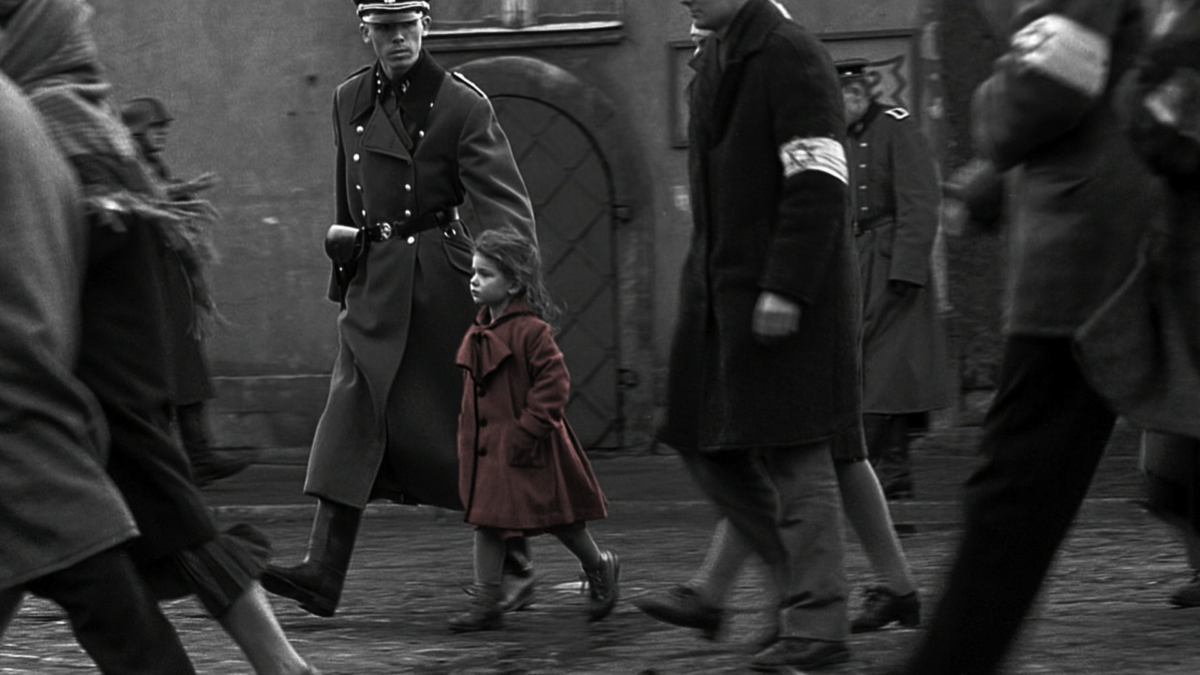Introduction:
“Schindler’s List” (1993), directed by Steven Spielberg, stands as an enduring testament to the power of cinema to illuminate the darkest corners of human history. Based on the true story of Oskar Schindler, a German businessman who saved the lives of over a thousand Polish Jews during the Holocaust, the film is an exploration of humanity’s capacity for both cruelty and compassion. This comprehensive review delves into the profound impact of “Schindler’s List,” analyzing its narrative brilliance, powerful performances, thematic depth, cinematographic excellence, and lasting cultural significance.
Narrative Brilliance:
- Oskar Schindler’s Journey: At the heart of “Schindler’s List” is the transformative journey of Oskar Schindler, portrayed with exceptional nuance by Liam Neeson. From a self-interested businessman exploiting cheap labor to a compassionate savior risking everything to protect lives, Schindler’s evolution becomes a lens through which the film examines moral responsibility and the consequences of indifference.
- Itzhak Stern’s Role: Ben Kingsley’s portrayal of Itzhak Stern, Schindler’s Jewish accountant, adds another layer of complexity to the narrative. Stern’s collaboration with Schindler becomes a pivotal element, showcasing the unlikely alliances formed in the face of unimaginable atrocities.
- Amon Goeth as the Antagonist: Ralph Fiennes’s chilling portrayal of Amon Goeth, the sadistic SS officer overseeing the Plaszow labor camp, adds an element of terror and serves as a representation of the unbridled cruelty of the Nazi regime. Goeth’s interactions with Schindler create moments of intense dramatic tension.
Powerful Performances:
- Liam Neeson as Oskar Schindler: Liam Neeson’s performance as Oskar Schindler is a masterclass in understated brilliance. Neeson conveys the complexity of Schindler’s character, navigating the moral dilemmas and internal conflicts that define the role.
- Ben Kingsley as Itzhak Stern: Ben Kingsley’s portrayal of Itzhak Stern is poignant and deeply moving. Kingsley infuses the character with quiet strength, embodying the resilience of the Jewish people during one of history’s darkest chapters.
- Ralph Fiennes as Amon Goeth: Ralph Fiennes’s portrayal of Amon Goeth is haunting and unsettling. Fiennes captures the essence of Goeth’s sadistic nature, creating a character that lingers in the minds of the audience long after the credits roll.
Thematic Depth:
- Humanity Amidst Inhumanity: “Schindler’s List” explores the paradox of humanity coexisting with inhumanity. The film portrays acts of kindness, sacrifice, and solidarity amidst the pervasive brutality of the Holocaust, emphasizing the resilience of the human spirit.
- Moral Ambiguity: The narrative grapples with moral ambiguity, challenging viewers to confront the complexities of human behavior in extreme circumstances. Schindler’s moral awakening serves as a focal point, prompting reflection on the potential for redemption even in the face of profound moral compromise.
- Historical Authenticity: Spielberg’s commitment to historical authenticity is evident throughout the film. The meticulous attention to detail, including accurate depictions of Nazi atrocities and the stark realities of the concentration camps, ensures that “Schindler’s List” serves as both a cinematic experience and a historical document.
Cinematographic Excellence:
- Black and White Cinematography: Cinematographer Janusz Kamiński’s decision to film “Schindler’s List” in black and white adds a layer of stark realism. The monochromatic palette contributes to the film’s documentary-like quality, enhancing the gravity of the subject matter.
- Symbolic Use of Color: Spielberg’s symbolic use of color, notably the red coat worn by a young girl in one poignant scene, creates a visual motif that underscores the brutality and loss within the larger narrative. The selective use of color serves as a powerful cinematic device.
- Cinematic Composition: The composition of each frame in “Schindler’s List” is deliberate and evocative. Spielberg’s visual storytelling, coupled with Kamiński’s cinematography, captures the emotional weight of every moment, from the chaos of mass executions to the quiet acts of compassion.
Lasting Cultural Significance:
- Educational Impact: “Schindler’s List” has been widely used as an educational tool to teach students about the Holocaust. The film’s unflinching portrayal of historical atrocities sparks meaningful conversations about the importance of remembrance and the consequences of intolerance.
- Holocaust Remembrance: The film contributes to global efforts to commemorate the Holocaust. Its impact extends beyond the cinematic realm, aligning with initiatives dedicated to preserving the memory of the millions who suffered and perished during one of humanity’s darkest periods.
- Academic Study: “Schindler’s List” has become a subject of academic study, with scholars examining its historical accuracy, cinematic techniques, and societal impact. The film’s inclusion in academic curricula underscores its significance as both a work of art and an educational resource.
Conclusion:
“Schindler’s List” (1993) stands as a cinematic masterpiece that transcends traditional storytelling, offering an unflinching and deeply moving exploration of the Holocaust. Steven Spielberg’s directorial brilliance, coupled with powerful performances and a commitment to historical accuracy, elevates the film to the realm of timeless art. The narrative’s thematic richness, cinematographic excellence, and lasting cultural impact reinforce “Schindler’s List” as not just a film, but a visceral and transformative experience. As audiences grapple with the haunting realities depicted in the film, “Schindler’s List” remains an enduring reminder of the importance of bearing witness to history and the capacity for compassion to triumph over the darkest depths of human cruelty.
